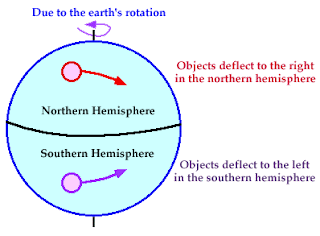After class yesterday, I walked back to my dorm and threw my book bag on my bed and headed for the c
ouch. Just a typical afternoon; class followed by a long date with TV and food. During the third episode of the Everybody Loves Raymond marathon, I came to realize something- it seems as though every commercial was lecturing me.

(Left: Everybody Loves Raymond Cast http://saintrichardsalmanac.blogspot.com/)
Every 30 seconds a new commercial appeared selling me some instant weight-loss supplement to help me "LOSE 20 LBS INSTANTLY!" or featuring some celebrity talking about the new foundation they started promoting active and healthy lifestyle for kids. I felt almost guilty for indulging in my Bullet Hole chicken nuggets and fries meal while watching fit kids run around on a playground. I felt worthless watching my third straight episode while Bowflex commercials assaulted me.
With this said, I am a college student. I have to defend myself and my actions against those who deem themselves "correct"-those companies that are telling me that being fit and active are the adjectives of a healthy lifestyle. So I ask them - why do we exercise?
...Ok, so I will never get a response from the TV, so I decided to go out and investigate the benefits of exercise myself.
Why Do We Exercise? I have come to the conclusion that we exercise for three reasons:
Exercise is good for our health.
Exercise feels good.
Exercise improves our appearance.
Your internal engine is your heart. And like all engines, we must keep it in mint condition in order for it to work at maximum performance for a very long life. The only way to maintain a healthy heart (besides eating correctly) is by pushing it to do more work - conditioning it- forcing it to pump more blood through your body in a shorter time period. This is where exercise comes into play.
(Below: A heart,
http://www.tailgatershandbook.com/ )

Exercise, whether it be cardio or strength training, puts stress on your body (mainly your muscles), forcing your heart to pump more blood through your circulatory system, to feed your muscles with oxygen. In doing so your heart is conditioning itself and if done consistently, will improve its efficiency. Each contraction will be stronger, and as a result, more blood will be pumped through your body with less effort and less contractions.
The normal resting heart rate for healthy adults is between 60-80 beats per minute. Athletes have a lower resting heart rate because their hearts are stronger and better conditioned, enabling them to pump more blood through their bodies with each contraction. Those of us who sit around all day, eating junk food and watching re-runs of Everybody Loves Raymond, typically have a resting heart rate in the neighborhood of the upper 90s or even 100s. This forces our hearts to do more work (even when we are resting)- putting it under more, unnecessary stress. Basically, a more conditioned heart can increase your longevity.
The second reason for why we exercise comes from the well-known feeling among athletes called the "runner's high". Supposedly, long distance runners and all athletes for that matter, gain some-sort of euphoria following a long-distance jog or some sort of long-term physical activity. Medical specialists credit the feeling to the anadamine levels that rise during strenuous activity. This substance is able to cross the highly impermeable blood-brain barrier, increasing the dopamine levels in the brain (Chris, 2005).
Exercise-induced release of anadamine is a cost-free way of receiving a high.
Lastly, we exercise to look good. In a world that focuses too much on our outer appearance, being in good shape means a lot. Exercising helps you lose unwanted fat (bad) and helps you build lean muscle (good), hopefully exposing that six-pack hidden under your college keg.
(Below: Cover of Men’s Health Magazine,
http://www.menshealth.com/ )

I don't even have to explain why a physically fit appearance is desirable- just go to any local store and glance over the cover pages of magazines. Fit men and women grace the covers with bold captions telling you to "READ INSIDE TO SEE HOW TO LOOK LIKE THIS!" We are molded to understand that looking good feels good and leads to success, and as time progressed it has come to be known as fact that when we look good, we feel good. So why not go out and get a little exercise?
Many companies actually hire personal trainers to work with employees one on one. The idea (supported by many years of experiments and data) is that these employees will be happier in the office and thus increase their productivity. The company can then increase its overall productivity just by hiring a personal trainer.
You can't say that hiring a personal pastry chef would have the same effect.
Some companies actually provide exercise facilities for employees because employee’s efforts in the gym will result in decreased medical costs. A recent publication on the New York Times website discussed a few companies who have taken steps to improve the overall health of their workers.
At Great Lakes Industry, President Larry Shultz cleaned up a storage area in order to make room for a few exercise machines. He hopes that employee’s increased health will decrease the company’s healthcare costs.
At another company, “Mike Shirkey, president of Orbitform Group, said, ‘If [employees are] not healthy and alert, they can't do things like designing projects.’ The company has installed a fitness center with exercise machines and showers that workers can use at lunchtime and before and after work” (Times.com).
One of the most important reasons to exercise is to drastically reduce your risk of acquiring chronic and genetic diseases. By exercising frequently you reduce your risk of…
· High Blood Pressure by 30 – 50%
· Diabetes by about 58%
· Heart Disease
· High Cholesterol
· Stress
…and many other dangerous life-style oriented health hazards. I have included a video that gives you every reason to start exercising on a regular basis if you haven’t yet, and every reason to keep exercising if you have already started.
THAT is why we exercise.
Work Cited:
Chris, 2005. Informative Blog Post at
http://www.fattyweightloss.com/what-causes-runners-high/Retrieved Data from WebMD's Page
http://www.webmd.com/cholesterol-management/high-cholesterol-tips-7/exerciseRetrieved Statistical Data from UCLA's Public Health Page
http://www.ph.ucla.edu/cehd/Documents/HandoutPAandChronicDiseases.pdfSlide Show information
http://www.nytimes.com/slideshow/2008/10/01/business/20081001-HEALTH_index.html (
Read more!


















 Chillin'
Chillin' Surprisingly, not science.
Surprisingly, not science. "Hurricanes don't care about Global Warming"
"Hurricanes don't care about Global Warming"









 Burj Dubai
Burj Dubai







